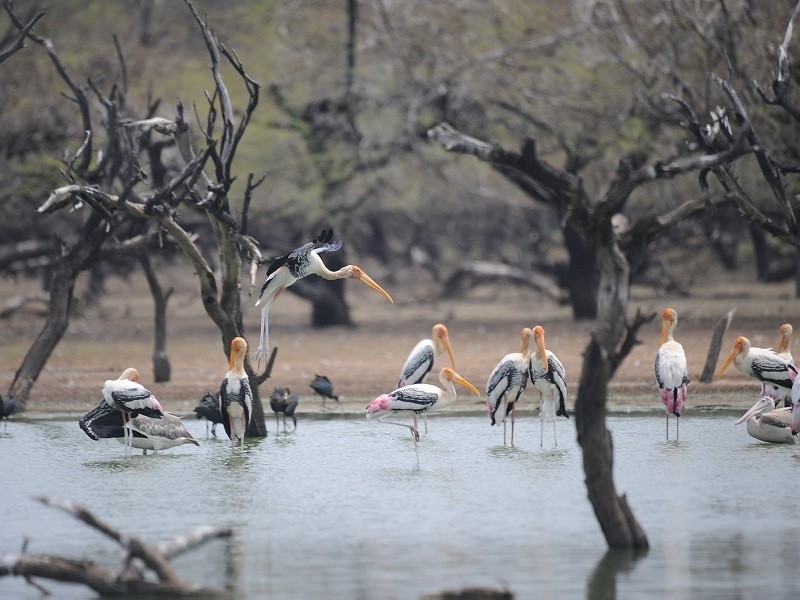
Koonthankulam Bird Sanctuary or Kunthankulam is a protected area which was declared as a sanctuary in 1994.It adjoins the tiny village of koonthankulam in Nanguneri Taluk of Tirunelveli district, Tamil Nadu, India. It is located 38 km away from Tirunelveli.
This is the largest reserve for breeding water birds in South India. International name: Koonthankulam Bird Sanctuary. A tiny village in the far south, Koonthankulam in Nanguneri Taluk of Tirunelveli District is emerging as a new favourite of the migratory birds. This village is sparsely populated. Migratory birds start coming by December end and fly away to their northern homes by June or July to lay eggs, hatch them and the young ones grow old enough to fly with the older ones. About 35 species variety of birds visit this calm but congenial village for breeding. The birds called Painted strokes are coming from North India and East European Countries.
COMMUNITY INVOLVEMENT
This sanctuary is actively protected and managed by the Koonthankulam village community. The local people take a keen interest in protecting this sanctuary.Birds coming to villagers' backyards are protected vehemently and regarded as harbingers of luck. The guano and silt from tanks are collected by villagers in summer and applied as fertilizer to their fields. All villagers protect the birds, their nests and fledglings. Fallen chicks are taken care of in the rescue centre till they are able to fly on their own. The Indian festival Diwali is not celebrated here to avoid the sound of crackers which would drive away the winged visitors.
An interpretation centre, watch tower, children's park and dormitory are open for public use throughout the year.
FAUNA
More than 43 species of resident and migratory water birds visit here every year. More than 100,000 migratory birds start coming by December and fly away to their northern homes by June or July after they lay and hatch eggs and the young ones mature enough to fly with the older ones.
The following migratory birds visit this area from other countries. • Bar-headed goose, Siberia • Common sandpiper, Siberia • Common teal, Siberia • Coot, central Siberia • Green sandpiper, Siberia • Greater Flamingo, northern India • Northern pintail, Siberia • White stork, central Asia Bar headed goose A flock of bar-headed geese (Anser indicus) at the lake in the sanctuary Pair of black-winged stilts (Himantopus himantopus) in the foreground with bar-headed geese in the background, at the sanctuary
Author
Sharona Joseline (I CSE B)
2021-07-07